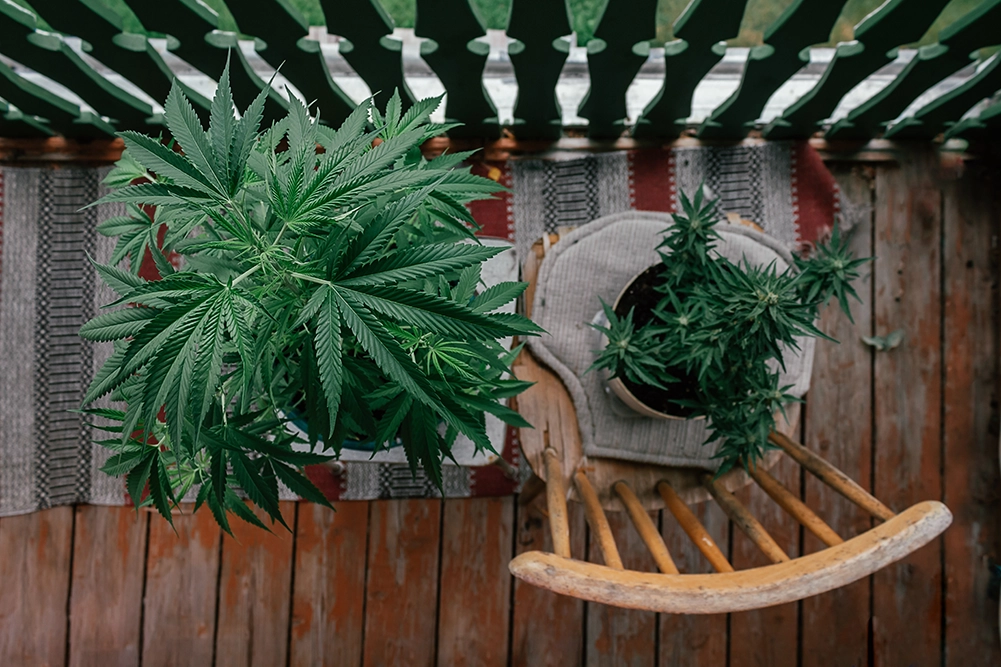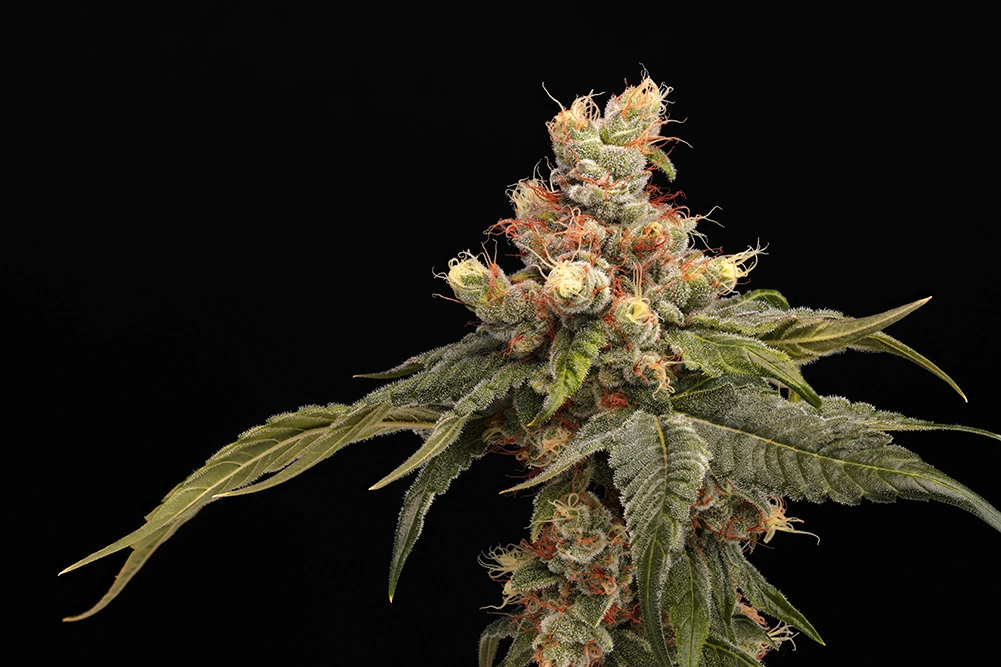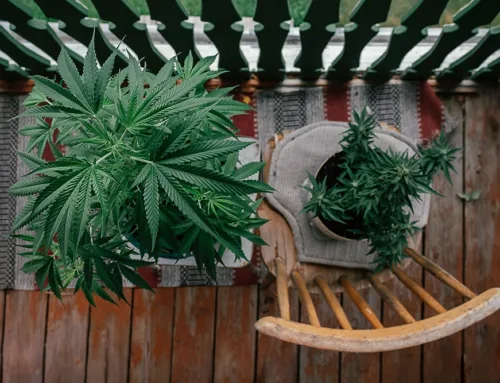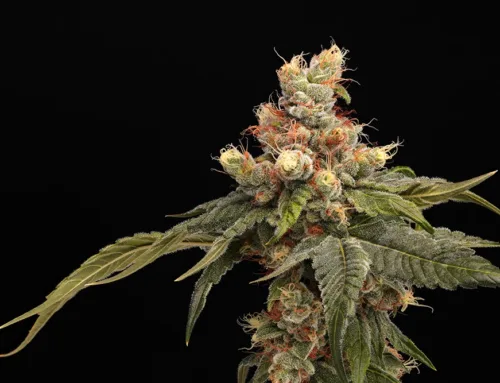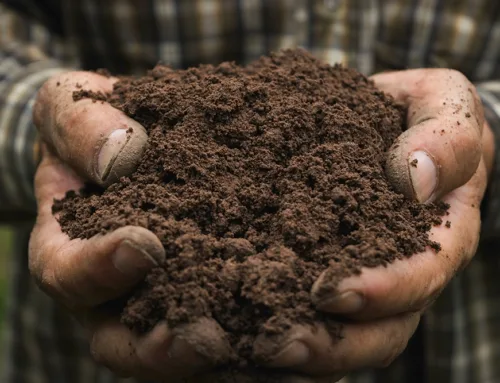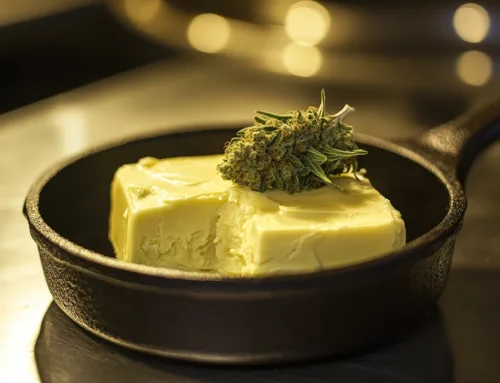Indoor vs Outdoor Weed
Indoor vs Outdoor Weed: Differences, Pros, and Cons
Are you ready to take your love for weed to the next level? Whether you’re a seasoned smoker or a budding enthusiast, understanding the differences between indoor and outdoor weed is essential. From unique benefits to potential drawbacks, each type offers a range of fascinating variations that can impact your overall experience. So, let’s explore the great indoor vs. outdoor cannabis debate.
- Indoor-grown weed is a term used to describe cannabis cultivated within a controlled indoor environment. This cultivation method uses hydroponics or soil-based systems and artificial lighting to simulate sunlight.
- Weed grown outdoors refers to cannabis cultivated in a natural environment without artificial light or temperature control. This cultivation method depends upon natural sunlight, weather conditions, and the best soil quality for plant yields.
Visual differences
When it comes to cannabis, there are often distinct visual differences between indoor and outdoor weed, and it’s essential to know how to differentiate between the two. Our guide can help you determine whether the cannabis you purchase from a dispensary is indoor or outdoor grown.
First, let’s run through some common characteristics of cannabis grown indoors and compare them to some of the traits that are commonly associated with outdoor cannabis.
Color
One of the most significant ways to differentiate between outdoor and indoor cannabis buds is by observing their color. Indoor-grown buds often display bright green hues as they are grown under artificial lighting and do not receive natural sunlight.
In contrast, outdoor-grown buds tend to express darker green colors due to their exposure to natural elements. They may appear weathered and sunburned, with a light brown color around the stalk at the base of the bud.
Size
One way to differentiate between indoor and outdoor weed nugs is by their size. Outdoor-grown buds are typically larger than indoor-grown buds because indoor-growing spaces are limited, often resulting in smaller buds.
Conversely, outdoor cannabis plants have more space to expand their roots, leading to bigger and chunkier buds. Additionally, outdoor-grown buds have significantly thicker stems than indoor-grown ones, making it a reliable way to differentiate between them.
Density
The term “density” refers to how tightly packed the buds are. Buds with high density are usually more compact and solid than buds with low density, which tend to be lighter and airy.
Indoor-grown cannabis plants typically produce denser buds due to a consistent nutrient supply throughout the cultivation cycle. Conversely, buds grown outdoors often have a more open structure due to the harsh environmental conditions and inconsistent nutrients.
Post-harvest aesthetics
Post-harvest indoor cannabis varieties are well-known for their pristine looks. They are usually machine-trimmed, which removes all the excess foliage and creates a perfectly trimmed bud every time. On the other hand, due to their substantially larger yields, outdoor-grown cannabis growers often lightly trim their buds, resulting in outdoor buds having a slightly leafier appearance than indoor varieties.
Trichome density
Trichomes are hair-like structures on cannabis that contain high levels of cannabinoids, responsible for the effects experienced after use. Outdoor plants develop trichomes to protect themselves from the elements, and many varieties have a darker, less glamorous appearance.
When you grow cannabis indoors, there’s typically a higher concentration of trichomes due to their proximity to the light source. Buds appear frosty and covered in white resin glands, distinguishing them from outdoor varieties.
Price differences
Outdoor-grown cannabis is typically cheaper than indoor-grown strains because indoor growing requires more resources, which is reflected in the final price. Outdoor-grown cannabis benefits from a bountiful amount of light and fresh air, making it more affordable for consumers to enjoy high-quality products without paying a premium price.
One key factor that affects the cost of cannabis is supply and demand. Take California, for instance. In the past year, the state has issued significantly more cultivation licenses than retail licenses, leading to an oversupply of outdoor-grown cannabis in the market.
This oversupply has caused prices to plummet, with the wholesale market hitting record lows in states like California, Colorado, and Washington. For consumers looking for affordable outdoor-grown weed, this is excellent news.
But if you are interested in indoor-grown cannabis, what can you anticipate?
Indoor-grown cannabis is in high demand and typically priced higher than outdoor-grown varieties. However, fierce competition in California has kept prices relatively lower than in other states.
Quality differences
Genetics play a crucial role in the quality of cannabis buds. That’s why it’s essential to choose a reputable cannabis seed bank like Humboldt Seed Company, which has decades of experience in the cannabis industry. By selecting a trusted seed bank, you can ensure that you start with high-quality genetics that will result in top-quality buds.
When comparing the flavor profiles and appeal of different cannabis flowers, there are significant differences between indoor and outdoor-grown varieties. While indoor cultivars may look better, outdoor-grown cannabis often boasts a more complex and nuanced terpene profile thanks to the unique terroir and environment in which it grows.
Due to the high trichome content, indoor strains are often perceived as more potent than outdoor-grown weed. However, it’s important to note that cannabinoids do not solely determine the potency of cannabis. While indoor cannabis can have more trichomes, which contribute to its potency, many outdoor strains have higher levels of sesquiterpenes, which can also affect the overall high. So, it’s not fair to say that one type of cannabis is inherently less potent than the other. Let’s learn more!
Scientific differences
There are considerable differences between indoor and outdoor cannabis. For example, a recent study from Columbia University and farmers in the Emerald Triangle compared the same two strains of cannabis grown indoors and outdoors. The results showed that outdoor plants had a more nuanced terpene profile, showed fewer signs of oxidation degradation, and tested for a higher concentration of sesquiterpenes.
The study’s authors also raised concerns about indoor-grown cannabis, noting that it had high levels of oxidized and degraded cannabinoids. These findings suggest that the cultivation process can significantly affect the quality of cannabis and its chemical composition.
Is growing weed outdoors the right choice for you?
Now that we’ve covered the basics for cannabis consumers let’s shift our focus to those who are thinking about growing their own cannabis. Whether you plan to cultivate indoors or outdoors, understanding the advantages and disadvantages of each growing method can help you grow top-quality cannabis.
Growing marijuiana outdoors has been a time-tested method for centuries. Cannabis growers worldwide utilize it to produce high-quality plants with excellent yields. If you’re considering growing your own cannabis, outdoor cultivation may be the perfect fit for you.
Advantages of weed grown outdoors
- Outdoor-grown weed has a more comprehensive terpene profile and complex flavors due to their exposure to natural sunlight and environmental factors.
- Outdoor growers can look forward to larger yields, making it an excellent option for large-scale production.
- It is cost-effective and affordable as it relies on natural sunlight and environmental conditions, reducing the need for expensive equipment.
- It is environmentally friendly, with fewer harmful chemicals released during production and a more sustainable, natural growth process.
Disadvantages of weed grown outdoors
- The buds may not have the same visual appeal, with open structures and darker green hues expressed throughout the foliage and buds.
- Outdoor cultivation is subject to weather conditions, which the grower has less control over, making it a less forgiving process.
- It’s important to note that outdoor strains are generally more susceptible to pests and diseases than indoor plants.
- Unlike indoor growing, outdoor cultivation only allows for one harvest per year, limiting the potential yield.
As an outdoor grower, you’ll love the benefits of Poddy Mouth Feminized. This strain offers high yield potential, mold resistance, and impressive resin production. With a THC level of 24-30%, even the most experienced cannabis enthusiasts will be impressed. Its dazzling trichome bracts are simply stunning, making it a feast for the eyes and palate. With a delightful blend of herbaceous, earthy, and sweet flavors, Poddy Mouth is a must-try strain for any cannabis connoisseur.
Is growing weed indoors the right choice for you?
For those who don’t have access to an outdoor grow space for cannabis, indoor growing is definitely worth considering. When growing weed indoors, whether in a grow tent, a grow room, or a greenhouse, you get complete control over the growing environment and can achieve a reliable yield. Let’s explore the advantages and disadvantages of growing weed indoors.
Advantages of weed grown indoors
- The environment can be easily controlled, allowing optimal growing conditions and consistent quality.
- Dense buds that have a more appealing appearance and higher THC levels due to controlled conditions.
- The ability to grow all year round, providing a continuous supply of cannabis.
- The root system has enough space to expand and grow, resulting in larger plants and buds.
Disadvantages of weed grown indoors
- Indoor cannabis cultivation requires expensive equipment like grow lights, fans, AC, and dehumidifiers for a suitable growing environment.
- The yields may be lower than outdoor cultivation due to space restrictions and the cost of electricity.
- Indoor cultivation can produce a strong odor that can be difficult to contain, which may cause problems for neighbors, especially in areas where cannabis cultivation is not legal.
- Maintaining the equipment can also be time-consuming and require additional expenses for repairs or replacements.
Strawberry Cheesecake Feminized is an excellent strain for first-time indoor growers. It was created by crossing two legendary strains from the Humboldt Seed Company: Girl Scout Cookies Forum Cut and Purple Panty Dropper. This strain boasts resinous buds and a delicious flavor profile, making it a popular choice among cannabis enthusiasts. The plant remains compact when grown indoors, making it easy to manage.
FAQs
Below are some commonly asked questions and answers regarding the differences between indoor and outdoor cannabis.
What’s the biggest difference between indoor and outdoor weed?
The most significant difference between indoor and outdoor cannabis buds is their density, appearance, and terpene profile.
Is outdoor weed better than indoor?
The debate over whether outdoor or indoor-grown weed is better comes down to personal preference. Outdoor weed has a stronger flavor and aroma, while indoor weed is often higher in THC and more visually appealing.
Is greenhouse weed considered outdoor or indoor?
Greenhouse weed is considered mixed light. It is a unique hybrid method that combines indoor cultivation’s controlled environment with outdoor growing’s natural sunlight.
Is outdoor weed less expensive than indoor?
Yes, outdoor-grown weed is less expensive than indoor-grown weed, as it does not require the same level of equipment and power.
Is indoor weed more potent?
Yes, it’s generally accepted that indoor cannabis tends to have higher THC levels compared to outdoor-grown cannabis. However, weed grown under the sun typically has more terpenes, a true indicator of experience.



